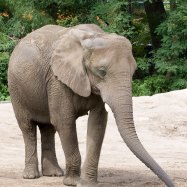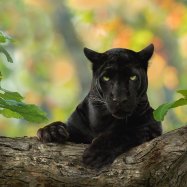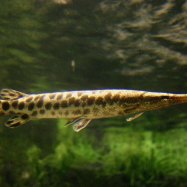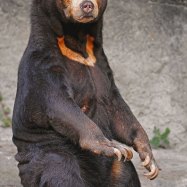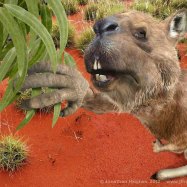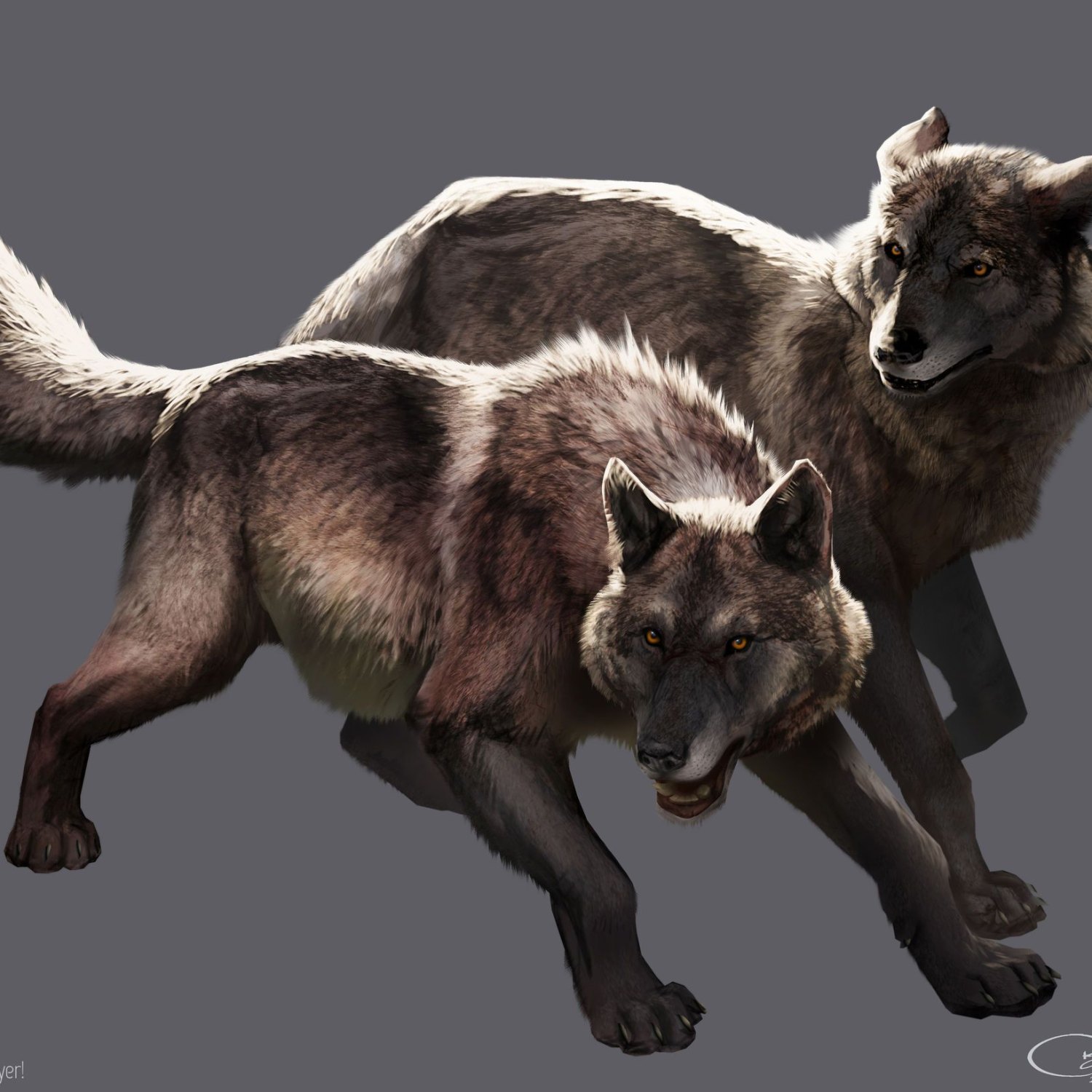
Dire Wolf
Approximately 5 feet
The Dire Wolf, native to North America, was a large and robust member of the Canidae family. Standing at around 5 feet long, it was an apex predator of its time. Despite its extinction, its legacy lives on in popular culture, particularly in the hit TV series 'Game of Thrones' where it is depicted as a fierce and formidable creature. #DireWolf #NorthAmerica #ExtinctAnimals
Animal Details Summary:
Common Name: Dire Wolf
Kingdom: Animalia
Habitat: Open grasslands, forests, and tundras
The Ferocious and Extinct Dire Wolf: An Icon of North American Wildlife
If you think of wolves, the first image that might come to mind is that of a majestic gray wolf howling at the moon against a snowy backdrop. However, there was once another species of wolf that roamed the North American wilderness - the Dire Wolf. Despite its terrifying appearance and notoriously aggressive nature, the Dire Wolf has long since gone extinct, leaving behind a legacy of fear and fascination.A Look into the Dire Wolf's Taxonomic Classification
Scientifically known as Canis dirus, the Dire Wolf, or Canis lupus Dirus, is a species of canine that belongs to the Animalia kingdom, Chordata phylum, and Mammalia class Dire Wolf. They were part of the Carnivora order and Canidae family, which includes animals such as wolves, dogs, foxes, and coyotes. The Dire Wolf's closest living relative is the gray wolf, Canis lupus, but they evolved separately and had distinct physical and behavioral differences.Habitat and Distribution of the Dire Wolf
The Dire Wolf once inhabited open grasslands, forests, and tundras across North America, from southern Canada to southern Mexico. They roamed alongside other now-extinct megafauna, such as the American lion, the saber-toothed cat, and woolly mammoths. Their range extended from coast to coast, making them one of the most widespread carnivores of their time. It is believed that the Dire Wolf's extinction is linked to the decline of these other large herbivores, which may have been their main food source.The Diet of the Dire Wolf
The Dire Wolf was a carnivorous animal, meaning that it fed exclusively on meat. Fossil evidence indicates that they primarily hunted large herbivores, such as bison, deer, and horses. Unlike modern wolves, they didn't have a preference for chasing down live prey and instead scavenged for carcasses of already dead animals Dragonfly. This behavior could be due to their large size and slow running speed, making it difficult for them to chase down smaller or faster prey.Physical Characteristics and Appearance
One of the most striking features of the Dire Wolf was its massive size. It was roughly the size of a modern gray wolf but stockier and more muscular, with a larger head and more massive jawbones. On average, they measured around five feet in length and weighed between 130 to 150 pounds. Their thick, double-layered fur came in shades of gray and brown, providing camouflage against their grassland and forest habitats. This thick coat also allowed them to survive in colder regions, unlike their gray wolf relatives.The Aggressive and Adaptable Nature of the Dire Wolf
Due to their powerful and intimidating appearance, the Dire Wolf has often been portrayed as vicious and bloodthirsty. However, scientists now believe this reputation to be largely exaggerated. Like most canines, the Dire Wolf likely lived and hunted in packs, with a strict pack hierarchy and strong social bonds. This pack mentality could have made them efficient hunters, allowing them to take down large prey that no single wolf could have managed alone. They were also highly adaptable and could survive in a variety of environments, making them one of the most successful predators of their time.The Dire Wolf's Demise
Despite their adaptability, the Dire Wolf could not survive the changing landscape and climate of North America. They lived during the Pleistocene Epoch, a period characterized by fluctuating temperatures and drastic environmental changes. The end of this epoch marked the beginning of the Last Glacial Maximum, where glaciers covered much of North America, causing a mass extinction event. The large herbivores that the Dire Wolf relied on for food were among the species that disappeared, ultimately leading to their extinction around 9,500 years ago.The Legacy of the Dire Wolf
Even though the Dire Wolf has been extinct for thousands of years, their legacy lives on in popular culture. They have been the subject of myths, legends, literature, and even hit TV shows. Some scientists also believe that the similarities between the Dire Wolf and modern domestic dogs support the theory that dogs may have descended from them rather than wolves. Additionally, the discovery of their fossils has provided valuable insights into the environmental and climatic conditions of their time. It has also helped scientists understand the evolution and extinction of large carnivores and their role in shaping ecosystems.In Conclusion: The End of an Era The Dire Wolf once stood at the top of the food chain, dominating the North American landscape for thousands of years. However, their reign eventually came to an end, and they became another victim of the changing environment. Despite their ferocity and intimidating appearance, the Dire Wolf played a crucial role in the ecosystem and left behind a legacy that continues to fascinate and intrigue us. As we continue to uncover more information about this ancient predator, we are reminded of the ever-changing nature of our planet and the importance of understanding and preserving our natural world.

Dire Wolf
Animal Details Dire Wolf - Scientific Name: Canis dirus
- Category: Animals D
- Scientific Name: Canis dirus
- Common Name: Dire Wolf
- Kingdom: Animalia
- Phylum: Chordata
- Class: Mammalia
- Order: Carnivora
- Family: Canidae
- Habitat: Open grasslands, forests, and tundras
- Feeding Method: Carnivorous
- Geographical Distribution: North America
- Country of Origin: United States
- Location: North America
- Animal Coloration: Gray and brown
- Body Shape: Large and robust
- Length: Approximately 5 feet
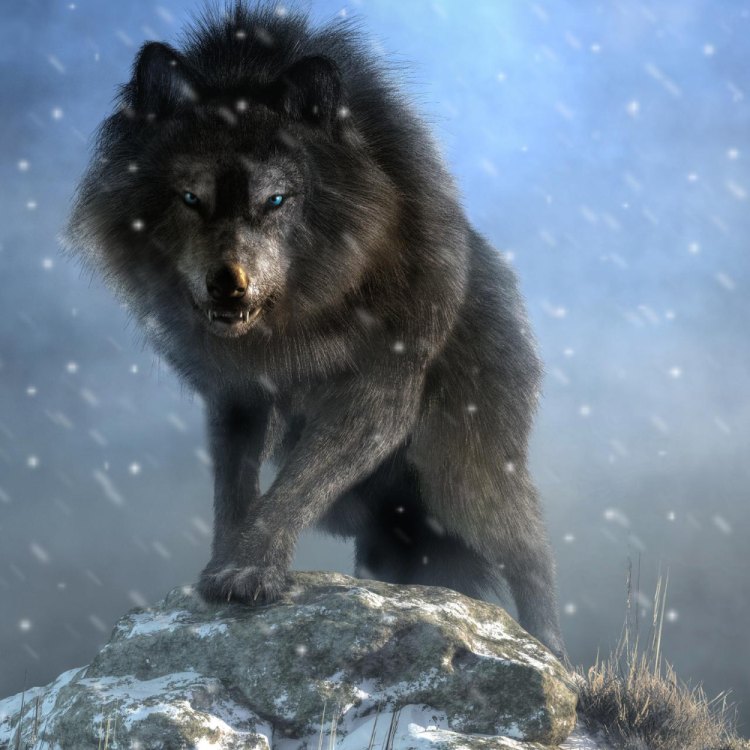
Dire Wolf
- Adult Size: Height: 2.55 feet, Length: 5 feet
- Average Lifespan: Unknown (estimated to be around 10 years)
- Reproduction: Sexual
- Reproductive Behavior: Unknown
- Sound or Call: Unknown
- Migration Pattern: Unknown
- Social Groups: Unknown
- Behavior: Unknown
- Threats: Climate change, habitat loss, and competition with other predators
- Conservation Status: Extinct
- Impact on Ecosystem: Unknown
- Human Use: None
- Distinctive Features: Large size and robust build
- Interesting Facts: Dire Wolves were not actually wolves, but a distinct species of canid. They lived in North America during the Pleistocene epoch. Dire Wolves were social animals and often hunted in packs. They became extinct around 10,000 years ago, possibly due to a combination of climate change and competition with other predators.
- Predator: Unknown
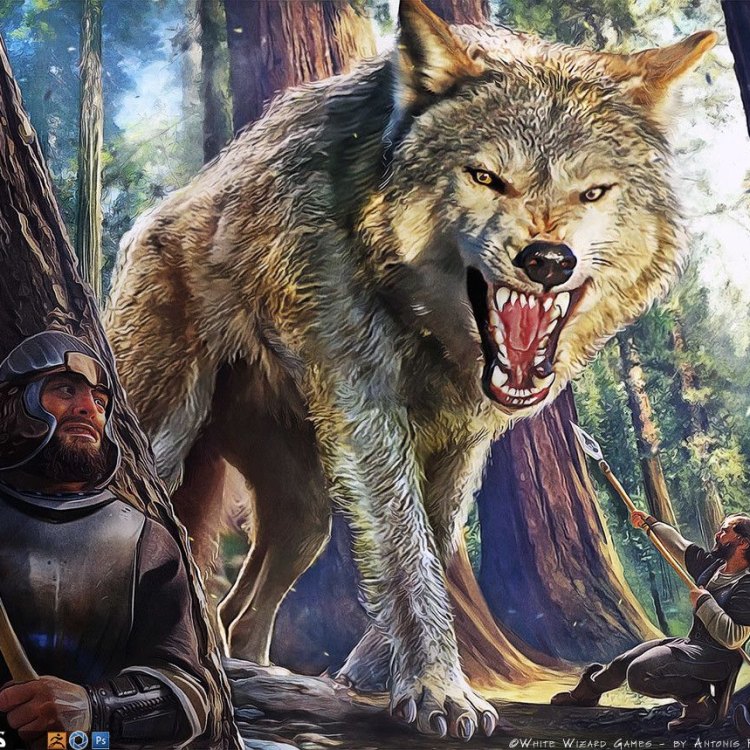
Canis dirus
The Extinct Giant: Exploring the Fascinating World of the Dire Wolf
The dire wolf, or Canis dirus, was a ferocious and powerful predator that roamed the lands of North America during the Pleistocene epoch. Often thought of as a species of wolf, the dire wolf was actually a distinct canid species known for its robust build and impressive size. Despite its intimidating appearance, this magnificent creature became extinct around 10,000 years ago, leaving behind a legacy that continues to fascinate and perplex scientists to this day.In this article, we will delve into the world of the dire wolf, exploring its distinctive features, intriguing behaviors, and the factors that led to its extinction PeaceOfAnimals.Com.
A Giant Among Canids
The dire wolf was a remarkable creature, known for its sheer size and powerful build. The average adult dire wolf stood at an impressive height of 2.55 feet and measured around 5 feet in length. This made the dire wolf significantly larger than its modern-day relative, the grey wolf.Its robust, muscular body was well-suited for its predatory lifestyle, and it is believed that an adult dire wolf could weigh up to 150 pounds. With its powerful jaws and sharp teeth, the dire wolf was a formidable hunter and one of the top predators of its time.
Despite its size and ferocity, the dire wolf had a relatively short lifespan, estimated to be around 10 years. This is comparable to the lifespan of modern wolves and other large canids. Unfortunately, very little is known about their reproductive behavior, making it difficult for scientists to determine their mating patterns or the number of offspring per litter Duck.
Predatory Tactics and Social Structure
Like modern wolves, dire wolves were highly social animals and often lived and hunted in packs. These packs were likely led by an alpha male and female and consisted of related individuals, including young adults and offspring from previous litters.Their social structure and cooperative hunting tactics made dire wolves efficient and successful predators. They were known to hunt in a coordinated pack, using their size and strength to take down large prey such as bison, horses, and even mammoths. This cooperative behavior also allowed them to defend their territories and compete with other predators for food and resources.
The Mysterious Call of the Dire Wolf
One of the most intriguing aspects of the dire wolf's behavior is its vocalization. Unfortunately, very little is known about their sounds or calls, as there are no existing recordings or firsthand accounts of their vocalizations.Some scientists believe that dire wolves may have had a similar howl to modern wolves, while others suggest they may have had a deeper, more rumbling call due to their size and build. Whatever the case may be, it remains a mystery that adds to the allure of this extinct species.
The Dire Wolf's Disappearance
The exact reasons for the dire wolf's extinction remain uncertain. However, scientists believe that a combination of factors, including climate change, habitat loss, and competition with other predators, including early humans, played a significant role.During the end of the Pleistocene epoch, the Earth was undergoing significant changes, including rapid climate fluctuations, which may have affected the dire wolf's prey availability. As these large herbivores began to decline in numbers, the dire wolf's main food source was greatly diminished, leading to a sharp decline in their population.
Moreover, human migration into North America is believed to have contributed to their extinction. As humans spread throughout the continent, they introduced new hunting practices and competed with dire wolves for resources. Over time, this could have led to the dire wolf's decline and eventual extinction.
The Legacy of the Dire Wolf
While the dire wolf may be long gone, its legacy continues to intrigue scientists and capture the imaginations of many. Their fossils have been found in various locations in the Americas, including the iconic La Brea Tar Pits, where thousands of dire wolf remains have been unearthed.Today, scientists continue to study these fossils, hoping to gain a better understanding of their behavior, social structure, and their impact on the ecosystem. Their findings have been critical in understanding the evolutionary history of canids and their relationship to modern-day species.
Protecting the Endangered
The dire wolf may be gone, but its story serves as a cautionary tale for the protection of our planet's endangered species. Just like the dire wolf, many animals are facing threats from various factors, such as climate change, habitat loss, and human interference.One of the most significant lessons we can learn from the dire wolf's extinction is the importance of preserving not only individual species but also their habitats and ecosystems. By maintaining a healthy and balanced environment, we can prevent the loss of other species and ensure the survival of our planet's diverse and unique creatures.
A Final Farewell to the Dire Wolf
In conclusion, the dire wolf was a remarkable and formidable species that once roamed the lands of North America. With its impressive size, robust build, and cooperative hunting tactics, it was a top predator of its time. Despite its strength and agility, the dire wolf ultimately met its fate, leaving behind a legacy that continues to intrigue and mystify us today.As we continue to explore and learn about the dire wolf, we must also reflect on the challenges our planet's current and future species face. By protecting and preserving our environment, we can ensure that the dire wolf and its compatriots will never suffer the same fate and instead thrive and roam freely for generations to come.
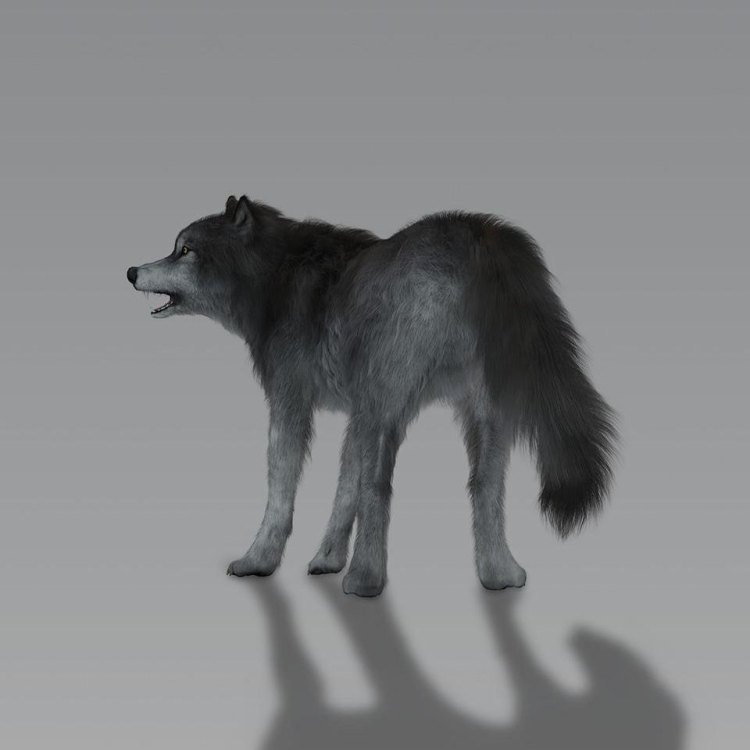
The Ferocious and Extinct Dire Wolf: An Icon of North American Wildlife
Disclaimer: The content provided is for informational purposes only. We cannot guarantee the accuracy of the information on this page 100%. All information provided here may change without prior notice.




